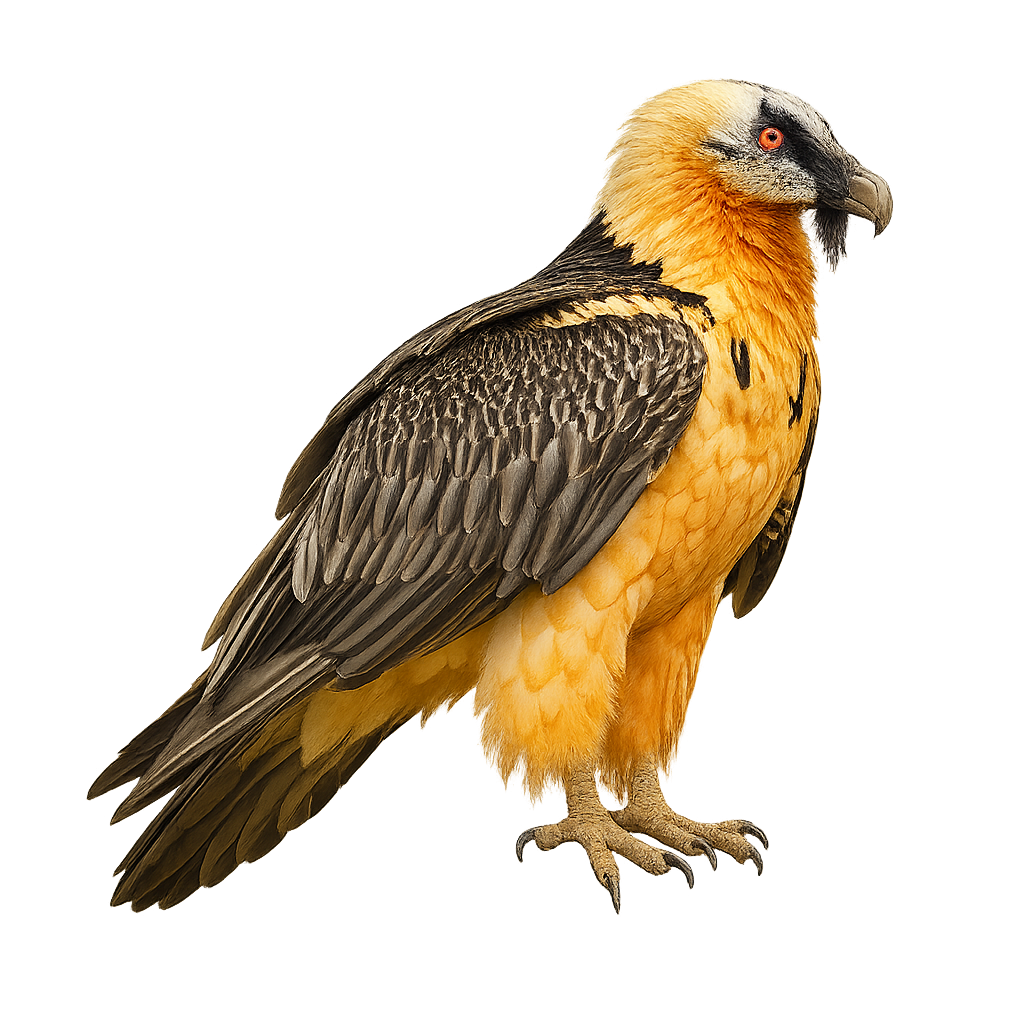Your wildlife photography guide.
Explore the bearded vulture in detail, study its behavior, prepare your shots.
Where to observe and photograph the bearded vulture in the wild
Learn where and when to spot the bearded vulture in the wild, how to identify the species based on distinctive features, and what natural environments it inhabits. The WildlifePhotographer app offers tailored photography tips that reflect the bearded vulture’s behavior, helping you capture better wildlife images. Explore the full species profile for key information including description, habitat, active periods, and approach techniques.
Bearded Vulture
Scientific name: Gypaetus barbatus

IUCN Status: Near Threatened
Family: ACCIPITRIDAE
Group: Birds
Sensitivity to human approach: Very shy
Minimum approach distance: 10 m
Courtship display: December to February
Incubation: 53-60 jours
Hatchings: February to March
Habitat:
Mountains and cliffs
Activity period :
Primarily active during the day, with peak activity in the morning and late afternoon.
Identification and description:
The Bearded Vulture is a large vulture, easily recognizable by its distinctive head, large wings, and brown and white plumage. It measures about 1.1 to 1.3 meters in length, with a wingspan of 2.6 to 2.8 meters, and weighs between 4.5 and 7.5 kg. Its head is covered with dark feathers, while its wings and back are mainly brown, with lighter feathers on its belly. The Bearded Vulture is unique among vultures for its feeding behavior, as it primarily feeds on bones. It is capable of breaking the hardest bones by dropping them from great heights to shatter them, allowing it to access the bone marrow. It primarily inhabits mountains, notably the Alps, the Pyrenees, and the Himalayas, where it also feeds on carcasses of dead animals, such as chamois or mouflons. Although the species was once endangered, conservation efforts have helped restore its population in certain areas. However, the Bearded Vulture remains vulnerable to human disturbance, habitat loss, and the decline of its natural prey.
Recommended lens:
300 mm – adjust based on distance, desired framing (portrait or habitat), and approach conditions.
Photography tips:
Use a telephoto lens to photograph from a distance, respecting the species' discreet nature.
Photograph early in the morning or late in the afternoon, when soft light highlights the bearded vulture's distinctive plumage.
Look for it in mountainous areas with cliffs and scree slopes, between 700 and 2,300 meters in altitude. These habitats provide suitable nesting sites and areas for bone breaking, which is essential to its diet.
Be patient and discreet to avoid disturbing its natural behavior. Avoid sudden movements and keep quiet.
IUCN status: Near Threatened. It is sensitive to habitat loss and human disturbance. It’s crucial to respect its environment and minimize disturbance, especially during the breeding season.
The WildlifePhotographer App is coming soon!
Be the first to explore the best nature spots, track rutting seasons, log your observations, and observe more wildlife.
Already 1 427 wildlife lovers subscribed worldwide

